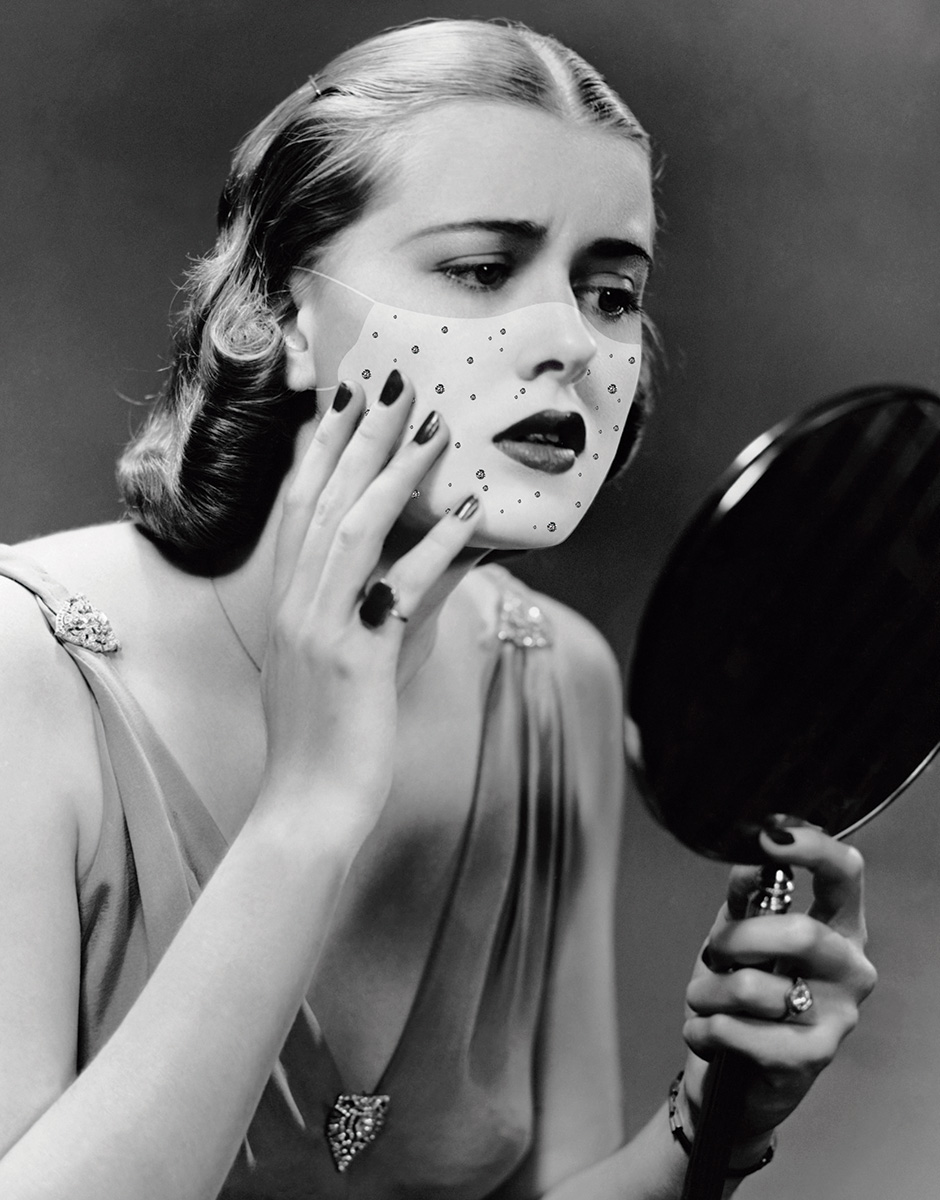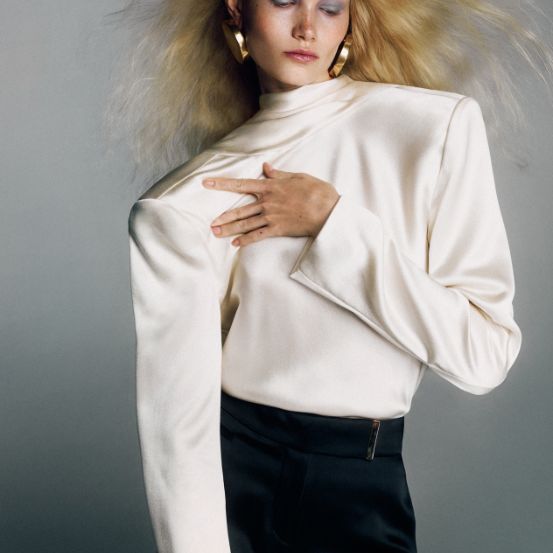… Is the maskne. This new normality brought us anxiety, uncertainty and stress levels through the roof. This new normality also brought masks. And masks brought acne. When it rains, it pours, am I right?
… Is the maskne. This new normality brought us anxiety, uncertainty and stress levels through the roof. This new normality also brought masks. And masks brought acne. When it rains, it pours, am I right?

In the last few months we can’t leave the house without inspecting our pockets and purse to make sure we aren’t missing keys, hand sanitizer and, of course, the mask. And this wasn’t as bad for our skin when we were just leaving the house to run some quick errands – and we could spend the remaining time doing other types of masking. But as we realize that this new normality is here to stay and, we need to start thinking about getting back to reality and making sure we do it while protecting ourselves and others by using masks. “Given the current situation, using masks is mandatory. But masks plus stress may result in the aggravation of pre-existing conditions like acne, rosacea and eczema”, says Judite Pereira, dermatologist at CUF Belém.
But when this became a problem for people who didn’t have problematic skin b.C (a.k.a before COVID-19), we started connecting the dots and realising that the masks might be causing the breakouts. And of course people were quick to come up with a catchy name for this – and just like this, maskne was born. This appearance of breakouts in the areas where the skin is covered by the mask (cheeks, nose and chin) is caused by the friction and the prolonged occlusion and heat we produce while breathing. This creates a warm and humid environment for our skin, making it produce more sebum. “The moist environment, the heat and the bacterias we exhale create a microclimate that alters our skin barrier and that alteration can cause acne”, explains the dermatologist that also mentions how stress can make things worse. “When people are anxious and nervous they tend to touch the face and pop pimples, producing irritation and acne scars”.
The skin specialist says that now is time to acquire some skincare routines that should only clean and hydrate the skin and repair the skin barrier, avoiding treatments and aggressive actives like chemical exfoliants and retinols. But our first step should be making sure that we are using the mask correctly: “First and foremost, keep in mind that you shouldn’t be wearing the masks for longer than it is advised by the manufacturer and, if possible, you should be removing the mask frequently. At least two times a day the skin should be cleansed with gentle products that protect the skin barrier and are adapted to each skin type and skin concerns”. We should avoid strong surfactants and look for neutral options (with pH levels between 4,5 and 5,5 which is the skin’s natural level), avoid parabens and fragrance. In makeup, it is better to choose oil free formulas that are also non comedogenic. “Micellar waters are also great because they remove makeup and cleanse the skin while not disturbing the skin’s hydrolipidic protective barrier. You can also look for thermal water sprays that have some benefits and also comfort the skin”.
Talking about hydration, we can search for some multi action formulas with calming, anti-inflammatory and moisturizing effects that soothe the skin and also regulate sebum production and also have anti-pollution effects. It is also important that those products are hypoallergenic and formulated for sensitive skin. The dermatologist also mentions that “we shouldn’t forget adding SPF to our skincare routines and that, in this stage, we should avoid actives like retinol, vitamin C, AHA’s and other exfoliants that can be too aggressive to our skin barrier – if you have really resilient skin, you can use one active on your P.M routine every other day. For oilier skin types that are acne prone, avoid high concentrations of benzoyl peroxide, since it is highly sensitizing”. To complement your basic skincare routine we can reach out to the only masks that still make us happy and get on that multimasking trend (if you haven’t hopped on that train yet, now is the time). This technique means you use different masks in different areas of your face, to treat different concerns. To treat maskne, you could use a purifying mask with clay or tea tree in the lower half of your face and a hydrating mask in the remaining areas, for example.
Keep in mind ingredients like gluconolactone, that has anti-inflammatory properties and “the trendy molecule: niacinamide, or Vitamin B3, that has tons of properties”, says the skin specialist. Niacinamide can be a strong ally since it is antioxidant, anti-inflammatory and regulates oil production – SVR’s Sebiaclear line actually combines these two ingredients. Centella Asiatica (that you can find in the Cicapair line by Dr. Jart+, for example) has soothing, regenerating and anti-redness effects, that can be very handy right now. To strengthen the skin barrier and deeply hydrate the skin you should look for ceramides, that are natural lipids present in the skin, hyaluronic acid that can be naturally found in multiple layers of the skin and has an essential role in repairing tissues and helping the production on collagen and elastin.
The mask itself and it’s material can also help or worsen skin problems. For example, surgical masks are a little bit more rough, causing more friction than cotton masks (that are also a more sustainable option. Judite clarifies that “in this case, the mask should be 100% cotton and non dyed, since some dyes can also be irritating to the skin, and should be washed frequently with hypoallergenic and fragrance free products”. If your situation is more serious and you have severe acne, besides having an appropriate skincare routine, you should also schedule an appointment with a dermatologist so he can, if necessary, also prescribe you acne medication or treatments like dermabrasion and chemical peels to deal with scarring.
1. Cleansing and purifying gel with probiotics, zinc and copper Normaderm Phytosolution, 200 ml, € 11,25, Vichy.
2. Soothing Thermal Water 150 ml, € 8,77 La Roche-Posay.
3. Hydrating and mattifying cream with SPF 50, Sebiaclear, € 15,90, SVR.
4. Foaming Cleanser with ceramides, hyaluronic acid and niacinamide € 10,80, CeraVe.
5. Soothing and nourishing moisturising Cleanance Hydra, € 14,78, Avène.
6. Purifying Micellar water suited for acne prone skin, Sébium H2O, € 24,18, Bioderma.
Translated from the original article from Vogue Portugal's The Beauty of Imperfection issue, published November 2020.Full credits and story on the print issue.
Most popular


Relacionados
.jpg)


LightHouse Publishing x Street Smash Burgers: uma noite no escritório da Vogue Portugal
19 Dec 2025
 (14).png)


